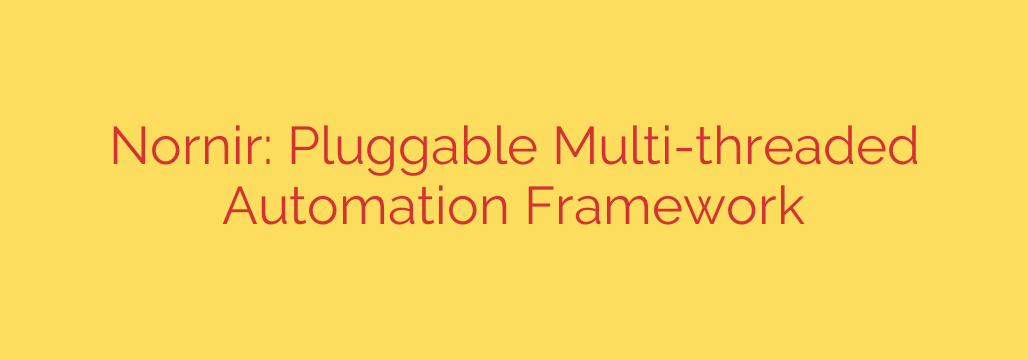
Streamlining Network Operations: Why a Framework Matters
Network automation is no longer a luxury; it’s a necessity for modern IT teams grappling with complex, expansive infrastructures. While simple scripts can handle basic repetitive tasks, managing larger, more dynamic networks demands a sophisticated approach. This is where robust automation frameworks shine, offering structure, scalability, and maintainability that standalone scripts simply can’t match.
One such powerful framework gaining significant traction in the networking community is a Python-based solution designed for maximum flexibility and efficiency. It empowers network engineers and automation specialists to orchestrate tasks across numerous devices concurrently.
At its heart, this framework leverages the power and versatility of Python. Unlike simple scripts that might hardcode device details and tasks, a framework provides a programmatic way to define inventory, tasks, and how those tasks should be executed against the inventory. This separation of concerns makes automation code much easier to manage, reuse, and debug.
Key Advantages for Modern Networks
What makes this framework particularly effective? Several core design principles contribute to its power:
- Pluggable Architecture: This is a critical feature. The framework is built with an extensible design, allowing users to easily integrate custom tasks, inventory sources, and output formats. Need to pull data from a specific database for your inventory? Want to use a custom library to interact with a vendor-specific API? The pluggable nature makes this possible without modifying the framework’s core code. This flexibility future-proofs your automation efforts.
- Multi-threaded Execution: Efficiency is paramount when dealing with hundreds or thousands of network devices. The framework is inherently multi-threaded, meaning it can execute tasks against multiple devices simultaneously. This dramatically reduces the time required to complete large-scale automation jobs like configuration deployments or data collection, significantly boosting operational speed.
- Pythonic Design: Written in Python, the framework is accessible to a vast community of network engineers already using Python for scripting and automation. Its API is designed to be intuitive and leverage standard Python constructs, making the learning curve manageable for those familiar with the language. Tasks are written as standard Python functions, promoting code readability and reusability.
Beyond Simple Scripting
Consider the difference between writing a script to change the NTP server on 100 routers versus using a framework. A script might involve looping through an IP list, executing SSH commands sequentially (slow!) or attempting brittle parallel execution. A framework allows you to:
- Define your 100 routers in a structured inventory file (YAML, NetBox, etc.).
- Write a single Python task function that takes a device object as input.
- Instruct the framework to run that task against your inventory.
The framework handles the complexity of connecting to each device (potentially in parallel), running the task, handling errors, and collecting results in a structured way.
Practical Implementation Tips
Adopting a network automation framework requires thoughtful planning. Here are a few tips for success:
- Start with Inventory: A well-structured and accurate inventory is the foundation of any successful automation. Leverage dynamic sources if possible (like CMDBs or network documentation platforms) to keep your inventory up-to-date.
- Secure Your Credentials: Never embed usernames and passwords directly in your automation code or inventory files. Use secure methods like environment variables, secret management systems (like HashiCorp Vault), or integration with identity management platforms.
- Test Thoroughly: Automation can have widespread impact. Always test your tasks on a small, non-critical subset of devices before deploying changes across your entire network.
- Implement Error Handling: Anticipate potential issues. Build robust error handling into your tasks to gracefully manage connection failures, command syntax errors, or unexpected device responses.
Conclusion
For organizations serious about scaling their network operations, moving beyond simple scripts to a dedicated automation framework is a logical and necessary step. Frameworks like the one described, with their pluggable architecture, multi-threaded execution, and Pythonic elegance, provide the structure, performance, and flexibility needed to tackle complex automation challenges effectively. By adopting a framework approach and following best practices for inventory management, security, and testing, teams can unlock significant operational efficiencies and build a more resilient network infrastructure.
Source: https://www.linuxlinks.com/nornir-pluggable-multi-threaded-framework/








